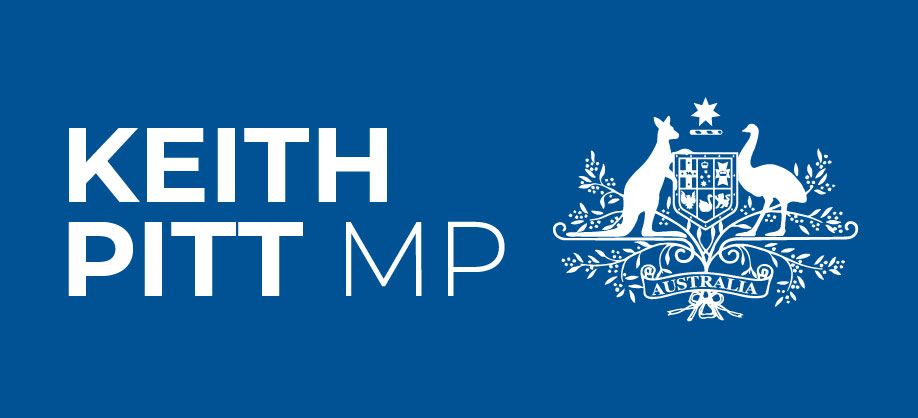Adjournment – Health and NBN
Mr PITT (Hinkler) (16:44): Yesterday, on Red Apple Day, Nationals MPs Barnaby Joyce, David Gillespie and I joined forces with Bowel Cancer Australia to encourage people to screen themselves for bowel cancer. During an ad break in last month’s State of Origin game, the three of us got talking about men’s health and realised we were all long overdue for a check-up. It is an uncomfortable issue that we do not like to talk about, let alone get tested for.
Bowel cancer is the second biggest cancer killer of Australians, despite it being one of the very few preventable cancers. About 90 per cent of bowel cancer cases can be treated successfully if found early, but unfortunately fewer than 40 per cent are detected early. Most people think it only impacts men over the age of 50, but the fact is that bowel cancer affects men and women, young and old.
Medical guidelines recommend screening from age 50 every one to two years. At present, at the ages of 50, 55, 60, 65, 70 and 74, people can access screening via the Australian government’s free program. Everyone else needs to see their GP or pharmacist for a BowelScreen Australia test. The coalition government is investing an additional $95.9 million to ensure Australians aged 50 to 74 receive a free, at-home bowel cancer screening kit every two years by 2020. Those people who experience symptoms such as blood in the bowel movement, unexplained weight loss or abdominal pain need to see their doctor for a colonoscopy.
Bowel Cancer Australia CEO, Julien Wiggins, has welcomed the coalition government’s listing of important bowel cancer treatments on the Pharmaceutical Benefits Scheme. Erbitux and Avastin are now available as first-line and second-line treatment options for patients with metastatic bowel cancer. The availability of these treatments, combined with greater access to screening, will help improve bowel cancer survival rates. I encourage everyone to support the important work of Bowel Cancer Australia during Bowel Cancer Awareness Month. Talk about the issue and get yourself tested.
While I am on the topic of health, I would like to highlight an example of medical innovation in my electorate. Best Practice Software was founded in Bundaberg in 2004 by Dr Frank Pyefinch. Dr Pyefinch was a local GP who was concerned there was no data retrieval program for GPs’ desktops. Best Practice Software develops, markets and supports quality software products for Australasian medical practices. Best Practice has remained true to its founding principles of supporting doctors and evolving to meet the changing needs within Australasian health care.
Having experienced exponential growth over its lifetime, the company now has offices in Sydney, Brisbane and Hamilton in New Zealand. They employ 80 people, 56 of whom are based in their purpose-built head office in Bundaberg. Wherever possible, they like to provide opportunities and help develop the skills of young local people who have recently graduated from high school or Central Queensland University, depending on the role. Their headquarters, or ‘nerve centre’, was built in 2013 to provide the ideal environment for their highly skilled team to work on research, development and customer support. They are committed to regional Australia and positive about their potential for future expansion in the Bundaberg area. They are just one of the local companies I know of that will benefit significantly from the rollout of the National Broadband Network in my electorate.
I would like to take this opportunity to provide the House with an update of the NBN rollout. The build has commenced on the fibre-to-the-node in in Ashfield, Avenell Heights, Bundaberg Central, Bundaberg East, Bundaberg North, Bundaberg South, Bundaberg West, Gooburrum, Kalkie, Kensington, Kepnock, Millbank, Norville, Rubyanna, Svensson Heights, Thabeban and Walkervale. That is 24,600 premises where the build is underway.
With regards to wireless NBN, nine towers have been activated. Residents and businesses in Apple Tree Creek, Burrum River, Childers, Cordalba, Doolbi, Howard West, Redridge North, Redridge West and Torbanlea North can now contact their telecommunications providers to get connected. These nine towers cover more than 2,300 premises. A further nine wireless NBN towers are under construction, either in or bordering on the Hinkler electorate. Five of them will go live in coming weeks. They are Alloway, Buxton West, Gooburrum, Sharon and South Bingera.
I recognise there are some suburbs in my electorate which are not included on the current roll-out plan. I continue to make representations to Minister Turnbull and NBN Co on behalf of residents in suburbs like Avoca, Burnett Heads and Urangan, where the service is particularly poor. In fact, I have a meeting scheduled with them tomorrow to request that these suburbs be considered a priority in future plans.
Labor had six years in office and delivered almost nothing for regional and rural Australia. They promised the world to residents in my electorate, but their handling of the NBN was a slow train wreck. The rollout is happening faster than ever since the Coalition Government took office. Our changes to the NBN rollout will see upgrades delivered four years sooner than under Labor and will avoid internet retail bills increasing by up to 80 per cent. It will also save the federal budget $32 billion. I look forward to seeing families, farmers, businesses and health providers in my electorate benefit from super fast internet.

